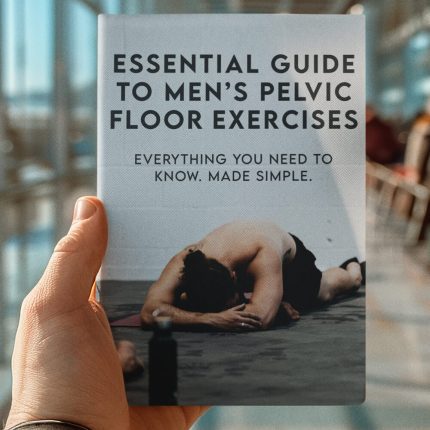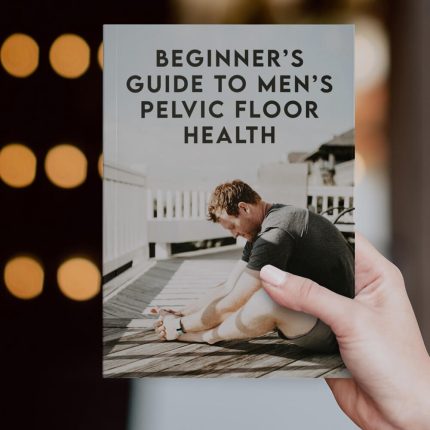
Pelvic Floor Therapy
Inside the Male Pelvic Floor: A Deep Dive into Key Muscles and Structures

When it comes to male pelvic floor health, the conversation rarely gets the spotlight it deserves, but trust us, this hidden powerhouse of muscles is about to become your new fitness obsession. Dive deep with us into the fascinating world of the male pelvic floor, where strength meets resilience, and discover how mastering these key muscles can transform everything from your core stability to your overall wellness. Get ready for a journey that’s equal parts science, humor, and practical tips, perfectly tailored for Gen-Z and millennial trailblazers looking to up their pelvic floor game.
Quick Links to Useful Sections
- Anatomy 101: Laying the Foundation of Male Pelvic Floor Health
- Key Muscles and Structures of the Male Pelvic Floor
- Why Focus on Male Pelvic Floor Health?
- Pelvic Floor Exercises: From Kegels to Advanced Training
- Kegel Exercises: The Classic Choice
- Reverse Kegels: Adding a Twist
- Dynamic Core Integration
- Pilates and Yoga Variations
- Common Challenges and Misconceptions About Male Pelvic Floor Health
- Myth 1: Pelvic Floor Issues Only Affect Women
- Myth 2: Kegels Are the Only Exercise You Need
- Myth 3: More is Always Better
- Myth 4: Pelvic Floor Dysfunction Is Inevitable With Age
- Conventional Therapies and Modern Interventions
- Manual Therapy Techniques
- Biofeedback Training
- Electrostimulation
- Complementary and Integrative Approaches to Male Pelvic Floor Health
- Acupuncture and Acupressure
- Massage and Myofascial Release
- Mindfulness and Meditation
- Yoga and Pilates
- Nutrition and Lifestyle: Fueling Your Pelvic Health
- Anti-Inflammatory Nutrition
- Hydration: The Unsung Hero
- Lean Proteins for Muscle Repair
- Sleep and Stress Management
- Real-Life Stories: Transformations Through Pelvic Floor Training
- Case Study 1: Reclaiming Confidence After Prostate Surgery
- Case Study 2: Overcoming Chronic Pelvic Pain with Integrative Therapy
- Case Study 3: Building a Resilient Core Through Daily Practice
- Integrating Technology and Modern Tools in Pelvic Floor Training
- Biofeedback Devices
- Mobile Apps and Wearables
- Virtual Consultations
- Resources and Community Support: Your Next Steps
- Specialized Health Websites and Forums
- Professional Consultations
- Books, Podcasts, and Blogs
- Local Workshops and Classes
- Creating Your Personalized Pelvic Floor Game Plan
- Step 1: Comprehensive Assessment
- Step 2: Set Clear, Measurable Goals
- Step 3: Integrate a Variety of Exercises
- Step 4: Embrace Complementary Therapies
- Step 5: Monitor and Adapt
- Integrative and Holistic Approaches FAQs: Your Questions Answered
- Your Next Step Towards a Confident, Empowered Pelvic Floor
Anatomy 101: Laying the Foundation of Male Pelvic Floor Health
Let’s break it down: the male pelvic floor is a complex network of muscles, ligaments, and connective tissues that stretches like a supportive hammock at the base of your abdomen. These muscles not only support vital organs such as the bladder, prostate, and intestines but also play a starring role in core stabilization and overall posture. Understanding their anatomy is the first step towards unlocking improved pelvic floor health and performance.
The main players in this anatomical symphony include the pubococcygeus (PC) muscle, the iliococcygeus, and the puborectalis, each one working in concert to ensure that your pelvic region is both strong and supple. These muscles might not be as talked-about as your biceps or glutes, but trust us, they’re every bit as crucial when it comes to maintaining optimal function and preventing issues like incontinence, lower back pain, and even sexual dysfunction.
Now, imagine these muscles as your body’s unsung heroes, quietly keeping everything in check. Whether you’re a desk-bound coder or a weekend warrior, a well-trained pelvic floor can contribute to better core stability, improved bladder control, and even enhanced performance in physical activities. So, gear up as we explore the nuts and bolts of these key muscles and how you can bring them into the spotlight.
Key Muscles and Structures of the Male Pelvic Floor
To truly appreciate the male pelvic floor’s benefits, it helps to get intimate with its anatomy. Here, we spotlight the primary muscles and structures that make up this intricate region:
Your pelvic floor affects how you move, how you use the bathroom, and how sex feels, yet most men are never taught how it works. This essential guide explains your pelvic floor in plain language and gives you a simple plan to relax, strengthen, and look after it at home.
Youll Learn How To:
- Understand what your pelvic floor does for bladder control, posture, and sex
- Spot signs of tension, weakness, and poor coordination
- Use breathing, reverse Kegels, and classic Kegels safely
- Improve habits for sitting, lifting, sport, sleep, and stress
Whats Inside: friendly explanations, safety guidelines, daily drills, sex function tools, flare up plans, and a complete twelve week program with trackers.
Perfect For: men of all ages who want less pelvic tension, fewer leaks, better comfort on the toilet, and more confidence in movement and in the bedroom.
- Pubococcygeus (PC) Muscle: Often the star of pelvic floor exercises like Kegels, the PC muscle runs from the pubic bone to the tailbone, playing a crucial role in urinary control and sexual health. Strengthening it can lead to improved orgasm quality and better overall pelvic stability.
- Iliococcygeus Muscle: This muscle supports the pelvic organs and is instrumental in maintaining pelvic alignment. It works hand-in-hand with the PC muscle to simulate a natural, coordinated contraction pattern.
- Puborectalis Muscle: Acting like a sling around the rectum, this muscle helps maintain fecal continence by controlling the angle between the rectum and anus. A well-toned puborectalis is essential to prevent unwanted leaks during everyday activities.
- Perineal Musculature: Located between the anus and the scrotum, these muscles assist in urinary control and support the function of the entire pelvic floor assembly. Often overlooked, a healthy perineum is key to avoiding common pelvic strain issues.
- Fascial Layers and Ligaments: These supportive tissues connect the pelvic muscles and organs, ensuring structural integrity while allowing necessary movement and flexibility.
Knowledge is power, and knowing your anatomy is the first step to a targeted, effective pelvic floor exercise regimen. By identifying these key players, you’re better equipped to incorporate targeted exercises and mindful practices that enhance their function, reduce pelvic pain, and boost overall core stamina.
Why Focus on Male Pelvic Floor Health?
If you’re still wondering why you should care about your pelvic floor, consider this: a strong, well-conditioned pelvic floor is not just about preventing embarrassing leaks. It’s about enhancing your posture, stabilizing your core, and even optimizing your athletic performance. In fact, performing pelvic floor exercises regularly may help you:
- Boost Sexual Performance: A strong pelvic floor can lead to better erectile function, more satisfying orgasms, and overall sexual health. When your muscles are in top shape, so is your performance between the sheets!
- Improve Core Strength: Think of your pelvic floor as the foundation of your core. Strengthening these muscles supports your lower back, enhances posture, and improves overall bodily stability.
- Minimize Urinary and Bowel Issues: Regularly exercising the pelvic floor can help prevent or alleviate urinary incontinence, reduce the risk of pelvic organ prolapse, and even support bowel regularity.
- Enhance Recovery and Rehabilitation: After surgery or injury, targeted pelvic floor therapy can speed up recovery, reduce pain, and improve functionality.
- Reduce Chronic Pain: Chronic pelvic pain, often linked to muscle tension in the pelvic floor, can be mitigated with a proper training regimen that relaxes and strengthens these vital muscles.
Whether you’re an athlete aiming for peak performance, someone recovering from a surgical procedure, or simply a health-conscious individual looking to optimize every aspect of your body, focusing on the male pelvic floor is a smart move. It’s a subtle shift in your fitness routine that can yield significant dividends in overall quality of life.
Pelvic Floor Exercises: From Kegels to Advanced Training
When you think of pelvic floor exercises, the name Kegels probably pops into your head. But there’s a whole arsenal of movements that can target these muscles in diverse ways. Here’s a rundown of some effective exercises to help you cultivate a rock-solid pelvic floor:
Kegel Exercises: The Classic Choice
Kegels primarily target the PC muscle. To perform a Kegel, simply identify the muscles used to stop the flow of urine midstream. Contract these muscles for a count of five, then relax for another count of five. Aim for three sets of 10 repetitions daily. Over time, you’ll notice improved control and muscle tone that translate into enhanced core stability and sexual health.
Reverse Kegels: Adding a Twist
Reverse Kegels focus on lengthening rather than contracting the pelvic floor. To perform them, gently simulate the sensation of bearing down, like you’re trying to pass gas, without overstraining yourself. This exercise helps relax overly tense muscles and is a great complement to standard Kegels.
Dynamic Core Integration
Integrating pelvic floor exercises into broader core workouts can elevate your routine. Try combining planks or bridges with pelvic floor contractions. For instance, while holding a plank, contract your pelvic muscles and maintain this subtle engagement throughout. This integration boosts overall core strength while ensuring that the pelvic floor is actively working alongside the abdominals and glutes.
Pilates and Yoga Variations
Many Pilates and yoga exercises naturally engage the pelvic floor. Movements like the bridge, the tabletop position, and even certain yoga poses like the wheel or child’s pose encourage deep pelvic muscle activation. These exercises not only strengthen but also stretch the pelvic region, promoting flexibility and reducing the risk of muscle stiffness.
The key to successful pelvic floor training is consistency and mindfulness. Integrate these exercises into your daily routine, and over time, their benefits will compound, contributing to better posture, reduced incontinence, and a noticeable boost in athletic performance.
EXPLORE OUR EXPERT MEN'S PELVIC FLOOR GUIDES WITH HIDDEN TIPS AND TRICKS
👨💻 Men's Pelvic Floor Book Store (Instant Download) 👨💻
Common Challenges and Misconceptions About Male Pelvic Floor Health
Despite the growing interest in pelvic floor well-being, a number of myths and misconceptions continue to surround this important aspect of male health. Let’s set the record straight:
Your pelvic floor affects how you move, how you use the bathroom, and how sex feels, yet most men are never taught how it works. This essential guide explains your pelvic floor in plain language and gives you a simple plan to relax, strengthen, and look after it at home.
Youll Learn How To:
- Understand what your pelvic floor does for bladder control, posture, and sex
- Spot signs of tension, weakness, and poor coordination
- Use breathing, reverse Kegels, and classic Kegels safely
- Improve habits for sitting, lifting, sport, sleep, and stress
Whats Inside: friendly explanations, safety guidelines, daily drills, sex function tools, flare up plans, and a complete twelve week program with trackers.
Perfect For: men of all ages who want less pelvic tension, fewer leaks, better comfort on the toilet, and more confidence in movement and in the bedroom.
Myth 1: Pelvic Floor Issues Only Affect Women
While pelvic floor dysfunction is widely discussed in the context of women’s health, especially post-pregnancy, the fact is that men are equally susceptible to issues like urinary incontinence, pelvic pain, and sexual dysfunction. Ignoring these warning signs can lead to chronic discomfort and even impact daily life.
Myth 2: Kegels Are the Only Exercise You Need
Sure, Kegels are a great starting point, but relying solely on them may not address the full scope of pelvic floor functionality. Incorporating a variety of exercises, including reverse Kegels, dynamic core workouts, and flexibility routines, ensures a more balanced approach to strengthening these muscles.
Myth 3: More is Always Better
Overexerting your pelvic floor can lead to muscle fatigue and tension. As with any workout, quality trumps quantity. Focus on proper form and gradual progression rather than bombarding your muscles with too many repetitions.
Myth 4: Pelvic Floor Dysfunction Is Inevitable With Age
While age can be a factor, proactive pelvic floor training can help stave off some of the natural declines in muscle tone. A well-maintained pelvic floor is a key component of healthy aging, contributing to greater independence and quality of life.
Dispelling these myths is the first step toward embracing a more honest and informed conversation about male pelvic floor health. With the right approach, you can take control of your well-being and defy outdated assumptions.
Conventional Therapies and Modern Interventions
For many men experiencing pelvic floor issues, whether it’s post-surgical recovery, chronic pelvic pain, or urinary challenges, conventional pelvic floor therapy offers a strong foundation for rehabilitation. A skilled physical therapist can map out your unique pelvic anatomy and develop a personalized program that not only focuses on exercise but also on proper techniques. Here are some interventions commonly recommended:
Manual Therapy Techniques
Manual therapies, including trigger point release and myofascial release, are invaluable for addressing chronic muscle tension and pain. These hands-on techniques, performed by trained professionals, can break up adhesions and promote blood flow to the affected areas, paving the way for more effective rehabilitation.
Biofeedback Training
Biofeedback devices are game changers for many men. These tools offer real-time data on muscle activity, allowing you to fine-tune your exercise technique and ensure that you’re engaging the correct muscles. By visualizing your muscle contractions, you build a stronger mind-muscle connection and make faster progress.
Electrostimulation
Sometimes, a little extra push is needed. Electrostimulation therapy uses mild electrical pulses to trigger muscle contractions, helping to activate weak or underused muscles in the pelvic floor. This method can be especially beneficial for those struggling with severe muscle weakness or post-surgical rehabilitation.
These conventional therapies serve as your launchpad for recovery. They’re evidence-based, targeted, and designed to prime your body for the more integrative approaches that follow.
Your pelvic floor affects how you move, how you use the bathroom, and how sex feels, yet most men are never taught how it works. This essential guide explains your pelvic floor in plain language and gives you a simple plan to relax, strengthen, and look after it at home.
Youll Learn How To:
- Understand what your pelvic floor does for bladder control, posture, and sex
- Spot signs of tension, weakness, and poor coordination
- Use breathing, reverse Kegels, and classic Kegels safely
- Improve habits for sitting, lifting, sport, sleep, and stress
Whats Inside: friendly explanations, safety guidelines, daily drills, sex function tools, flare up plans, and a complete twelve week program with trackers.
Perfect For: men of all ages who want less pelvic tension, fewer leaks, better comfort on the toilet, and more confidence in movement and in the bedroom.
EXPLORE OUR EXPERT MEN'S PELVIC FLOOR GUIDES WITH HIDDEN TIPS AND TRICKS
👨💻 Men's Pelvic Floor Book Store (Instant Download) 👨💻
Complementary and Integrative Approaches to Male Pelvic Floor Health
Beyond conventional methods, a growing number of men are turning to complementary approaches that integrate traditional therapies with holistic practices. These methods focus on the synergy between body, mind, and even lifestyle to foster a more comprehensive recovery. Here are some of the integrative strategies that’re making waves:
Acupuncture and Acupressure
Acupuncture isn’t just for relieving back pain or reducing stress, it’s increasingly recognized for its ability to alleviate chronic pelvic discomfort. By stimulating specific points on the body, acupuncture can help balance energy flow and reduce inflammation, making it a valuable supplement to your pelvic floor routine. Acupressure, which uses similar principles without needles, can also be incorporated into daily self-care.
Massage and Myofascial Release
Therapeutic massages focusing on the lower back and pelvic region can ease muscle tension and break down fibrosis. Myofascial release techniques, in particular, target the fascia, the connective tissue that encases muscles, helping to improve flexibility and reduce pain.
Mindfulness and Meditation
Stress can wreak havoc on your pelvic floor by causing excessive muscle tension and inhibiting recovery. Mindfulness meditation, deep breathing exercises, and guided imagery are excellent tools to create a calm, focused state that not only reduces stress but also enhances your ability to connect with your body during pelvic floor exercises.
Yoga and Pilates
These practices are renowned for their ability to integrate the mind and body, making them perfect complements to any pelvic floor regimen. Classes that emphasize core stabilization, controlled breathing, and precise movement can help you maintain proper pelvic alignment and prevent injury. Don’t be surprised if you become a yoga convert after experiencing its transformative effects on your pelvic floor.
Combining these complementary therapies with conventional treatments creates a synergistic approach that lights up every pathway of your healing journey. It’s about blending the best of science and nature to nurture a healthier, more resilient pelvic floor.
Nutrition and Lifestyle: Fueling Your Pelvic Health
You are what you eat, and your pelvic floor is no exception. A proactive approach to nutrition and lifestyle adjustments can dramatically influence pelvic floor health. Here’s how:
Anti-Inflammatory Nutrition
Focus on foods that combat inflammation. Think antioxidant-rich berries, leafy greens, nuts, and fatty fish high in omega-3s. These foods power up your body’s natural healing processes and help keep tissue inflammation at bay.
Hydration: The Unsung Hero
Staying hydrated is key for any muscle group, including the pelvic floor. Adequate water intake ensures that your tissues remain supple and can recover from rigorous workouts. Consider keeping a water bottle handy at all times.
Lean Proteins for Muscle Repair
Rebuild and repair your pelvic muscles with a balanced intake of lean proteins such as chicken, fish, legumes, and tofu. These proteins provide essential amino acids that promote muscle recovery after a challenging workout.
Sleep and Stress Management
Never underestimate the power of a good night’s sleep. Aim for 7-9 hours per night to allow your muscles , including your pelvic floor , to recover and regenerate. Pair quality sleep with stress-management techniques like journaling, mindfulness, or even listening to your favorite tunes to keep your stress levels in check.
When you combine nutrition and lifestyle modifications with targeted pelvic floor exercises, you create a comprehensive strategy that optimizes recovery, reduces inflammation, and supports overall wellness.
EXPLORE OUR EXPERT MEN'S PELVIC FLOOR GUIDES WITH HIDDEN TIPS AND TRICKS
👨💻 Men's Pelvic Floor Book Store (Instant Download) 👨💻
Real-Life Stories: Transformations Through Pelvic Floor Training
Sometimes, the most inspiring lessons come from real-life transformations. Here are a few compelling stories that illustrate how men turned their pelvic floor challenges into triumphs:
Case Study 1: Reclaiming Confidence After Prostate Surgery
Mark, a 62-year-old retiree, faced significant challenges post-prostate surgery, including urinary incontinence and reduced core strength. Skeptical at first, Mark eventually embraced a comprehensive pelvic floor training program that combined physical therapy, Kegel variations, and even yoga sessions tailored for core stability. Over several months, not only did his incontinence issues abate, but he also reported an improved sense of overall wellbeing and confidence. His journey underscores the importance of perseverance and the profound impact of a dedicated pelvic floor regimen.
Case Study 2: Overcoming Chronic Pelvic Pain with Integrative Therapy
Alex, a 38-year-old digital nomad, was no stranger to stress-induced pelvic discomfort. After experiencing chronic pelvic pain that hindered his ability to work and travel, he embarked on an integrative therapy program that combined conventional pelvic floor exercises with acupuncture, mindfulness meditation, and nutritional adjustments. Gradually, Alex noticed that his pelvic pain diminished, his mental clarity improved, and he gained a renewed ability to relish his adventurous lifestyle. His transformation is a testament to the power of blending science with holistic healing practices.
Case Study 3: Building a Resilient Core Through Daily Practice
Ryan, in his late 20s and a dedicated gym enthusiast, discovered that a strong pelvic floor wasn’t just for preventing leaks, it was essential for optimizing his performance in weight training. By integrating pelvic floor exercises into his daily routine, Ryan experienced improved stability during heavy lifts, reduced lower back pain, and even noticed better balance and flexibility. His commitment serves as a powerful reminder that even seemingly obscure muscle groups play a critical role in overall functional strength.
These case studies reveal that regardless of age or circumstance, a well-structured pelvic floor training program can catalyze remarkable improvements. Whether you’re in recovery or simply striving for peak performance, your journey can mirror these success stories with the right blend of science, commitment, and a pinch of humor.
Integrating Technology and Modern Tools in Pelvic Floor Training
In today’s digital age, who wouldn’t want a little tech assistance in their pursuit of health? The male pelvic floor isn’t exempt from the benefits of modern technology. Here are some futuristic tools and apps that can help supercharge your training:
Biofeedback Devices
As mentioned earlier, biofeedback is a revolutionary technology that provides real-time insights into your muscle activity. These devices help you gauge the intensity of your contractions, ensuring you’re performing exercises correctly and effectively. This data-driven approach enhances your mind-muscle connection, leading to faster and more consistent progress.
Mobile Apps and Wearables
Manage your training regimen with specialized pelvic floor apps that offer guided exercise routines, progress tracking, and reminders. Some wearables even integrate with these apps to deliver live updates on your core and pelvic floor performance. Such technology makes it easier than ever to stay motivated, even on days when you’d rather binge your favorite series.
Virtual Consultations
For those with a packed schedule or residing in remote areas, virtual consultations with pelvic floor specialists can offer personalized advice and guidance. Leveraging video calls and digital health assessments, these professionals help tailor your training plan and ensure you’re on the right track amidst life’s chaos.
Embracing technology not only modernizes your approach to pelvic floor training but also offers the flexibility needed to integrate these exercises seamlessly into your busy lifestyle.
Resources and Community Support: Your Next Steps
Embarking on a journey to improve your pelvic floor health can feel both exciting and overwhelming. Fortunately, numerous resources and communities are out there to support you along the way. Consider exploring these avenues:
Specialized Health Websites and Forums
Join online communities and forums dedicated to pelvic floor health where you can share experiences, gather tips, and connect with others facing similar challenges. These communities frequently host expert-led discussions, webinars, and Q&A sessions.
Professional Consultations
Whether you’re looking for a pelvic floor physical therapist, a nutritionist, or a mindfulness coach, don’t hesitate to reach out to professionals who can provide customized guidance. Many clinics offer virtual appointments, making expert advice accessible from the comfort of your home.
Books, Podcasts, and Blogs
Educate yourself further with books and podcasts on pelvic floor training, holistic health, and mindfulness. These resources can not only broaden your knowledge but also inspire you to dig deeper into this transformative journey.
Local Workshops and Classes
Look for workshops, yoga classes, or support groups in your area that focus on pelvic floor exercises and core health. Sometimes, learning together in a group setting can be both motivating and a lot of fun.
Remember, you’re not alone on this journey. Tapping into a supportive community can make all the difference, offering inspiration, accountability, and the occasional laugh when the going gets tough.
Creating Your Personalized Pelvic Floor Game Plan
Crafting a personalized game plan tailored to your body’s unique needs is essential for long-term pelvic health success. Here’s a step-by-step guide to get you started:
Step 1: Comprehensive Assessment
Begin with a detailed assessment by a pelvic floor specialist who will evaluate your current muscle strength, any existing symptoms, and overall lifestyle factors. Understanding your baseline is crucial to tailor the perfect plan.
Step 2: Set Clear, Measurable Goals
Identify what you want to achieve, be it improved bladder control, enhanced core stability, or greater sexual performance. Clear and achievable goals will keep you motivated and allow you to monitor your progress over time.
Step 3: Integrate a Variety of Exercises
Don’t limit yourself to just one type of exercise. Combine Kegels, reverse Kegels, dynamic core workouts, yoga, and Pilates to create a balanced routine. This hybrid approach ensures that every part of your pelvic floor gets the attention it deserves.
Step 4: Embrace Complementary Therapies
Supplement your exercise regimen with complementary therapies such as acupuncture, massage, and mindfulness meditation. These practices can help relax tense muscles and accelerate your overall progress.
Step 5: Monitor and Adapt
Track your progress using journals, apps, or even wearable devices. Regularly review and adjust your plan with the help of your healthcare professionals. Remember, the key is consistency and adaptability, not perfection.
Creating your personalized pelvic floor game plan is a dynamic process, one that evolves as you learn more about your body and as your needs change. Embrace this journey as a long-term investment in your health and wellbeing.
EXPLORE OUR EXPERT MEN'S PELVIC FLOOR GUIDES WITH HIDDEN TIPS AND TRICKS
👨💻 Men's Pelvic Floor Book Store (Instant Download) 👨💻
Integrative and Holistic Approaches FAQs: Your Questions Answered
Here are some frequently asked questions that address common concerns about maintaining optimal male pelvic floor health:
1. What are the primary functions of the male pelvic floor?
The male pelvic floor supports vital organs such as the bladder, prostate, and intestines. Its muscles also play key roles in urinary and bowel control, sexual function, and overall core stability.
2. How do pelvic floor exercises help improve sexual performance?
Strengthening the pelvic floor enhances blood flow and muscle control, which can lead to better erectile function and more satisfying orgasms. It also supports endurance and overall stamina during intimate moments.
3. Can I perform pelvic floor exercises if I have a history of pelvic pain?
Absolutely, provided you get the green light from a healthcare professional. A tailored program that includes gentle stretching and relaxation techniques can be very effective in addressing pelvic pain.
4. How long does it take to see improvements in pelvic floor strength?
Results vary, but many men notice improvements in muscle tone and control after several weeks of consistent practice. Patience and regular training are key.
5. What role do complementary therapies play in pelvic floor health?
Complementary therapies like acupuncture, massage, and mindfulness not only relieve stress and pain but also enhance the benefits of targeted pelvic floor exercises, promoting a holistic approach to wellness.
6. Are biofeedback devices really effective?
Yes, biofeedback provides real-time insights into muscle activation, allowing you to refine your technique and achieve better outcomes. It’s a modern tool that can significantly enhance your training regimen.
7. Can nutrition impact my pelvic floor health?
Definitely. An anti-inflammatory diet rich in antioxidants, lean proteins, and omega-3 fatty acids supports muscle repair, reduces inflammation, and contributes to overall pelvic floor wellness.
8. Is pelvic floor dysfunction common in younger men?
While many associate pelvic floor issues with aging, younger men can also experience dysfunction due to stress, sedentary lifestyles, or injury. Early intervention and proper training can help prevent long-term problems.
9. Are there digital tools to help track pelvic floor progress?
Yes, numerous apps and wearable devices are specifically designed to monitor pelvic floor exercises, provide reminders, and track your progress over time.
10. How do I know if I need professional guidance?
If you’re experiencing persistent pelvic pain, incontinence, or difficulties with core stability, consult a pelvic floor specialist who can assess your condition and design a personalized treatment plan.
Your Next Step Towards a Confident, Empowered Pelvic Floor
As you embark on your journey to redefine what it means to have a strong, healthy pelvic floor, remember that this is more than just a set of exercises, it’s a lifestyle revolution. By embracing targeted pelvic floor workouts, integrating complementary therapies, and fueling your body with the right nutrition, you’re taking charge of your wellness in a bold, informed, and empowered way.
Whether you’re recovering from an injury or simply looking to upgrade your fitness regime, the male pelvic floor deserves the spotlight. Health isn’t a one-size-fits-all journey, and neither is the path to optimal pelvic health. With a blend of science, humor, and an unwavering commitment to progress, every step you take now is a building block for enhanced core strength, improved stability, and a more confident you.
So, grab your water bottle, set a reminder for your daily Kegels, and immerse yourself in the rich, rewarding world of male pelvic floor training. Your body has a quiet strength waiting to be unleashed, start nurturing it today and reap the benefits that span well beyond the gym.
Embrace the transformative journey, celebrate every small win, and share your progress with a community that’s just as determined as you are. Your empowered, robust pelvic floor isn’t just about physical strength, it’s about resilience, balance, and a renewed zest for life. Let the revolution begin!
Your pelvic floor affects how you move, how you use the bathroom, and how sex feels, yet most men are never taught how it works. This essential guide explains your pelvic floor in plain language and gives you a simple plan to relax, strengthen, and look after it at home.
Youll Learn How To:
- Understand what your pelvic floor does for bladder control, posture, and sex
- Spot signs of tension, weakness, and poor coordination
- Use breathing, reverse Kegels, and classic Kegels safely
- Improve habits for sitting, lifting, sport, sleep, and stress
Whats Inside: friendly explanations, safety guidelines, daily drills, sex function tools, flare up plans, and a complete twelve week program with trackers.
Perfect For: men of all ages who want less pelvic tension, fewer leaks, better comfort on the toilet, and more confidence in movement and in the bedroom.
Curious About Your Pelvic Floor? Explore our curated collection of insightful articles to learn more and take charge of your health.
- Pelvic Floor Basics
- Pelvic Floor Exercises & Workouts
- Pelvic Floor Kegel Exercises: Techniques & Benefits
- Advanced Pelvic Floor Workouts
- Pre/Post-Natal Pelvic Floor Routines
- Pelvic Floor Exercises for Men
- Pelvic Floor Therapy Techniques
- At-home vs Professional Pelvic Floor Therapy Options
- Diet & Lifestyle for a Healthy Pelvic Floor
- Pelvic Floor Health & Wellness
- Specialized Pelvic Floor Conditions & Treatments
Now back to the main article!

















